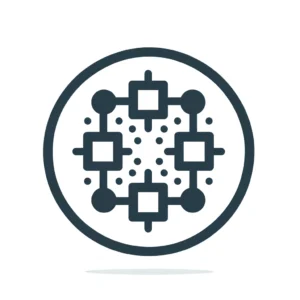Solana Network Surpasses $1 Billion in App Revenue for Second Consecutive Quarter
The Solana (SOL) blockchain continues to demonstrate impressive growth, with its network maintaining strong user engagement and surpassing $1 billion in application revenue for the second quarter in a row. According to the recently published Solana Network Health Report for Q2 2025, Solana’s performance has outpaced other major blockchain networks in several key metrics, solidifying its position as a leader in the cryptocurrency space.
Solana Outpaces Competitors in App Revenue
The report highlights a notable increase in app revenue on the Solana network compared to Q1 2025. While other blockchain networks experienced a decline in application revenue, Solana’s growth trajectory remained strong. In fact, Solana’s app revenue now exceeds the combined total of all other blockchain networks, showcasing its ability to attract and retain users at a higher rate than its competitors.
This surge in activity has also resulted in a significant boost in validator income, which reached an average quarterly level of $800 million. On January 19, validators earned a record $56.9 million in a single day. Simultaneously, validator costs have decreased, making the network more efficient and sustainable.
Lower Costs for Validators
The breakeven SOL stake required for validators to cover their operational costs has dropped significantly. Validators now need just 16,000 SOL to break even, a sharp decline from the 50,000 SOL required in 2022. This reduction highlights substantial improvements in the network’s efficiency and cost-effectiveness, making it more accessible for participants to contribute to the ecosystem.
Leading the Way in Developer Engagement
Solana has also emerged as the top blockchain for attracting new developers. In 2024, the network brought in 7,625 developers, more than any other blockchain, including Ethereum. This influx of talent underscores Solana’s appeal as a platform for building decentralized applications (dApps) and innovative blockchain solutions.
Advancements in Decentralization
The Solana Foundation reports significant progress in decentralization. The network’s Nakamoto Coefficient, a key measure of decentralization, reached 20 by June 2025. This places Solana ahead of Ethereum (6), Sui (18), and Sei (7). A higher Nakamoto Coefficient indicates a more decentralized and secure network, further solidifying Solana’s position as a robust blockchain ecosystem.
Additionally, Solana validators are geographically distributed, ensuring no single country or data center controls more than 33% of the total stake. Germany leads with 23.55% of the stake, followed by the United States at 17.37% and the Netherlands at 14.36%. This diverse distribution enhances the network’s resilience and decentralization.
Key Takeaways for Investors and Enthusiasts
For those interested in cryptocurrencies, investing, and blockchain technology, Solana’s continued growth and efficiency improvements present compelling opportunities. Here are some key takeaways:
- Strong Revenue Performance: Solana’s ability to generate over $1 billion in app revenue for consecutive quarters signals its robust ecosystem and user engagement.
- Lower Validator Costs: The reduced breakeven SOL stake makes it more cost-effective for participants to become validators, encouraging wider participation.
- Developer Attraction: Solana’s appeal to developers ensures a steady stream of innovation and new applications on the network.
- Decentralization Gains: The high Nakamoto Coefficient and geographically distributed validators enhance the network’s security and decentralization.
As Solana continues to break new ground in terms of revenue, efficiency, and decentralization, it remains a key player in the evolving blockchain landscape. By focusing on network performance and developer engagement, Solana is well-positioned to maintain its growth trajectory and attract more users and investors in the coming years.
























